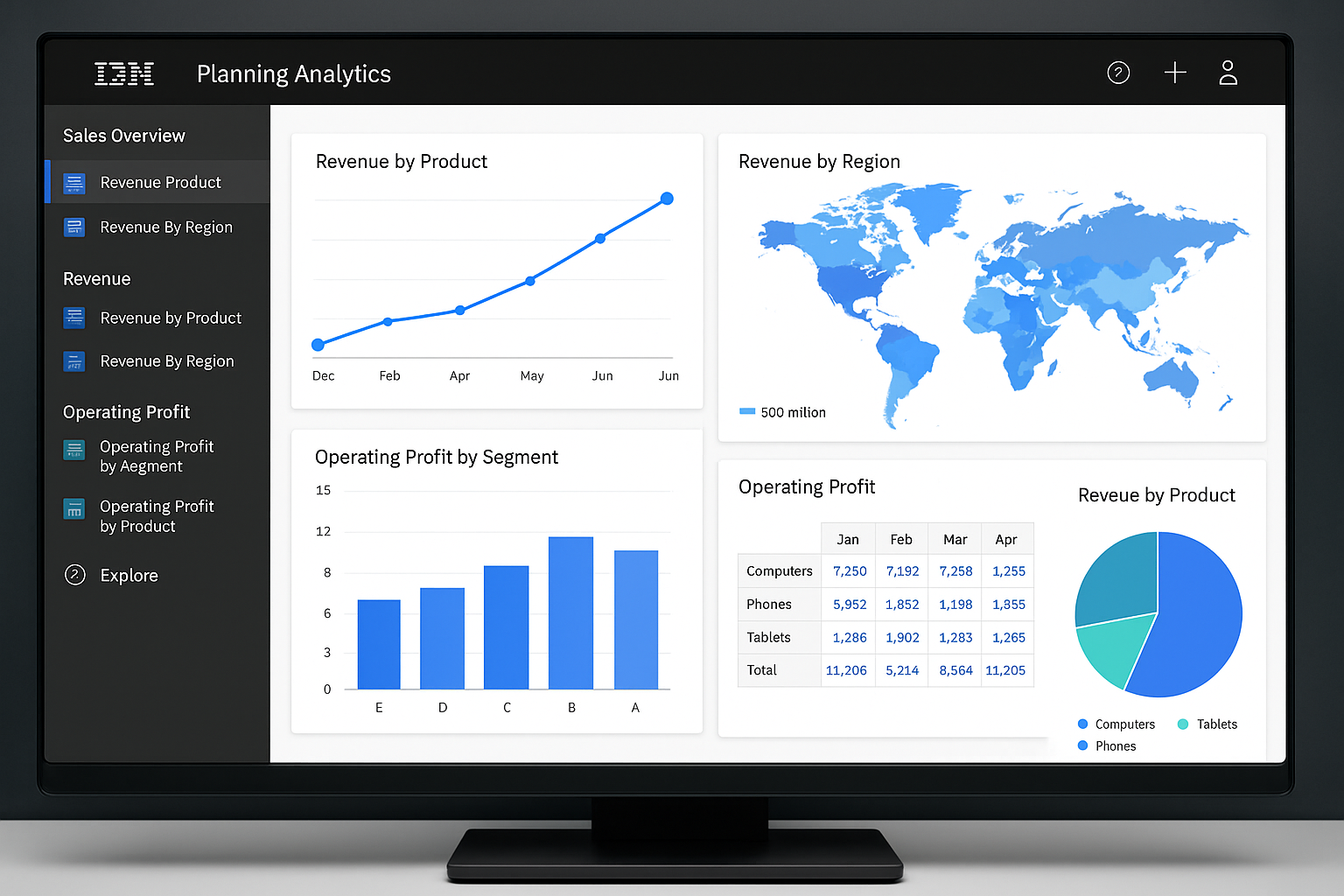📊 The Evolution of TM1: From Innovation to IBM Planning Analytics
A deep dive into the origin, evolution, and transformation of TM1 into IBM Planning Analytics — the journey of a visionary product that shaped enterprise planning


📊 The Evolution of TM1: From Innovation to IBM Planning Analytics
Every great enterprise tech tool begins with a bold idea. TM1 — now known globally as IBM Planning Analytics — was born from a visionary attempt to reshape business forecasting and multidimensional analysis.
Let’s explore how this iconic platform evolved from a humble startup concept to one of the most powerful planning engines in the enterprise ecosystem.
👨💻 The Origin: One Developer, One Big Idea
TM1 (short for Table Manager 1) was created in the early 1980s by Manuel Perez ( widely know as Manny Perez ), a Cuban-American software engineer and visionary.
Frustrated by the limitations of traditional spreadsheet systems like Lotus 1-2-3 and Excel, Perez envisioned a faster, multidimensional calculation engine — one that worked like the human brain with instant updates across datasets.
In 1983, he founded Sinper Corporation and launched the first version of TM1 — a real-time in-memory OLAP engine (Online Analytical Processing), years ahead of its time.
“The spreadsheet is linear. Business is not. TM1 was built for business logic as it really is — dynamic, layered, and interconnected.” — Manuel Perez
🧠 TM1’s Core Architecture: The Cube Revolution
Unlike relational databases, TM1 used data cubes — multidimensional data structures — to represent business models.
- In-memory computing made calculations lightning-fast.
- Rules-based modeling allowed for intelligent forecasting and logic.
- Hierarchical dimensions mimicked real-world business structure.
This was the OLAP engine before OLAP was cool — and businesses took notice.
📈 Adoption and Growth
TM1 began quietly disrupting the finance and planning world:
- Early adopters included banks, manufacturers, and consulting firms.
- By the 1990s, TM1 had found loyal enterprise customers in need of real-time financial consolidation and scenario planning.
As the need for agile, scalable forecasting grew, so did TM1’s appeal.
💼 Acquisition Journey: Sinper → Applix → Cognos → IBM
Here’s a quick timeline of acquisitions that led TM1 into IBM’s hands:
| Year | Event |
|---|---|
| 1996 | Sinper rebrands TM1 under Applix Inc. |
| 2007 | Applix is acquired by Cognos for ~$339 million |
| 2008 | Cognos is acquired by IBM for ~$5 billion |
| 2016 | IBM rebrands TM1 as Planning Analytics with new UI and cloud enhancements |
Each acquisition brought more resources, wider integration, and eventually — a modern, cloud-ready analytics suite.
🔁 From TM1 to Planning Analytics: The Evolution of Features
| Version | Notable Features |
|---|---|
| TM1 Classic (1990s–2000s) | Cube-based modeling, in-memory calc engine, TurboIntegrator |
| Applix TM1 9.x | Improved Excel integration, Web interface |
| IBM Cognos TM1 10.x | TM1 Web, Contributor, Performance Modeler |
| Planning Analytics (PA) 2.x | IBM Cloud support, Planning Analytics Workspace (PAW), AI + ML integration, REST APIs |
With the addition of PAW (Planning Analytics Workspace) and Planning Analytics for Excel (PAx), IBM positioned TM1 as a modern planning platform, not just a finance engine.
🤖 Tech Evolution: From Spreadsheets to AI-Powered Forecasting

IBM brought AI and machine learning to TM1 via the Watson engine, enabling:
- Predictive forecasting
- Anomaly detection
- Natural language queries
This turned Planning Analytics into a cognitive engine — not just a calculator — helping enterprises adapt faster and smarter.
🔧 TM1 in Today’s Tech Stack
Whether deployed on-premises or in the cloud, Planning Analytics is often integrated with:
- ERP systems (SAP, Oracle)
- Power BI, Tableau
- RESTful APIs for custom apps
- Data lakes and data fabric via IBM DataStage
It still stands out for write-back capability, complex rule modeling, and real-time simulations — features many BI tools still struggle with.
🚀 Final Thought
From a garage-born product to an enterprise-grade forecasting system, the journey of TM1 is a tale of persistence, vision, and continuous innovation.
TM1 didn’t just adapt to enterprise needs — it anticipated them. That’s why it remains core to thousands of organizations globally.
Whether you're a startup building forecasts or a Fortune 500 driving transformation, Planning Analytics with TM1 offers a blend of speed, intelligence, and logic that’s hard to match.